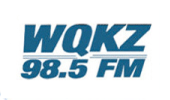Patoka Sportsman 12-12-20
Patoka Sportsman 12-12 & 12-13-20
Deer season is winding down however there are still some opportunities left if you still have tags to fill. The deer archery season runs through January 3. Muzzle Loader season ends December 20. The Deer Reduction Zone Season is through Jan. 31, 2021. The bag limit is 10 deer, of which only one can be antlered. Individuals hunting in a designated Reduction Zone who are attempting to satisfy the Reduction Zone bag limit must harvest an antlerless deer before harvesting an antlered deer. The Special Antlerless Firearm season starts Dec. 26 and runs through the first Sunday in January of the next year in all counties except those with a County Bonus Antlerless Quota designation of “A”. Deer harvested during the Special Antlerless Firearms season count toward the bonus antlerless county quota limit. The 2020 season is Dec. 26 – Jan. 3, 2021. Fall archery season for turkeys continues through Jan. 3. Dove season officially ends on Jan. 7. Gray and fox squirrel season runs through Jan. 31. Rabbit season continues through Feb. 28.
If you’re still deer hunting and have your freezer full you still can donate to the hunters for the hungry. You can take your legally harvested deer to either Sanders Processing in Celestine, Cannelburg Processing or Ohio Valley Caviar in English and donate it. You must donate the entire deer. The processing will be paid for through a grand from the Sportsmen’s Benevolence Fund and administered by the Dubois County Sportsmen’s Club. So far we’ve had over 120 deer donated. One person who donates a deer will win a gun donated by Dr. Greg Gordon at Jasper Optical Lab. Winner will be drawn at the January 25 DCSC meeting and gun raffle drawing at the jasper Moose Lodge. If you still have tickets to sell you can turn them into the Great Outdoors anytime. If you’d like a ticket you can get one from me or any other DCSC member or at the Great Outdoors.
In 2012, the DNR started doing surveys of waterfowl flying over the lower Wabash River during winter (November-January). A segment of the West Fork White River was added to the survey area in 2013. These surveys collected important data that previously did not exist regarding how ducks and geese use rivers in the south and central waterfowl hunting zones.
After eight years of surveys, the data clearly show that duck usage of the lower Wabash consistently peaks during the last two to three weeks of January. Duck usage on the West Fork White is more variable, but within the range seen on Fish & Wildlife Areas in the central zone. Because analysis of these data has shown consistent timing of waterfowl usage, the surveys are no longer necessary on these river systems. If evidence in future years indicates shifts in migration timing, the possibility of doing these surveys could be revisited. Find weekly waterfowl counts on the DNR website.
The current Indiana deer harvest as of December 8 was 109,943. The total harvest in 2019-20 was 114,882. Dubois County’s numbers are at 1,778 so far compared to 1,739 last year. In Martin County there have been 1,378 deer taken so far compared to 1,505 last year. Pike County’s numbers are slightly ahead of last year with 1,588 deer checked in so far compared to 1,545 last year. Perry County’s numbers are down this year with 1,603 checked in last year compared to 1,437 this year. Crawford County is also down with 1,497 this year vs. 1,788 last season. If you’d like to check the numbers for yourself or would like to know the check in numbers for other counties just go to https://www.in.gov/dnr/fishwild/10286.htm.
Walleye are among the top 10 most sought-after sportfish in Indiana. These fish also have specialized spawning habitat requirements: they prefer to deposit eggs on clean, coarse surfaces such as large rocks and gravel in areas with current or wave action that provides an abundant supply of oxygen. These specialized habitat conditions are relatively rare in Indiana’s inland lakes, creating an annual stocking need met by DNR. Investigating natural recruitment in these lakes can be difficult. Differentiating naturally spawned walleye from stocked fish requires intensive work to chemically mark and recapture large numbers of young-of-year fish.
The pandemic canceled this year’s walleye egg collection efforts at Brookville Lake. Those efforts supply fry and fingerlings for the state hatchery system. While this interruption prevented many normal walleye stockings from occurring in 2020, the lack of stocking provided a rare opportunity to investigate natural recruitment more easily than in past years. Several central Indiana lakes, including Prairie Creek Reservoir, Summit Lake, Brookville Lake, and Cagles Mill Lake are being surveyed for evidence of natural walleye reproduction. Understanding levels of natural reproduction can help biologists prioritize habitat enhancement efforts, set proper stocking rates, and better understand walleye population dynamics in these lakes. A public report detailing project findings will be produced in 2021.
December means it’s cold in Indiana. The fish are still biting, but you may have to be more patient and dress warmer. For bass, work chatterbaits slower and twitch jerkbaits. Fish for crappie under docks using small jigs and light line. Although fall is the peak time for muskie fishing, muskie are still feeding in the shallows of our northern natural lakes and southern impoundments. Walleye bites may have slowed down, but walleye can still be caught in our lakes and rivers, even through the ice. Just slow your reeling, trolling, or jigging. Trout don’t mind the cool waters. In fact, they prefer it. That’s why we recently stocked hundreds of trout in lakes across the state. Open trout season for inland streams ends Dec. 31, so hit those trout streams for rainbow, brown, and brook trout. Brookville Lake’s tailwater is a popular spot.
Hoosiers can now enjoy access to the Ohio River via the Brooksburg Public Access Site near Madison. The new site is the Division of Fish & Wildlife’s 439th public access site. A $1.2 million investment of DNR funding and a strong partnership with Jefferson County Parks made this new opportunity for Indiana’s avid anglers and water enthusiasts possible. The Brooksburg Public Access Site is located at 531 South Brooksburg Main Street.
The holidays are upon us, and Indiana’s wildlife could use a gift from you. You can help with ongoing conservation efforts through the Indiana Nongame Wildlife Fund. Donations support habitat management and conservation programs for more than 150 species of greatest conservation need, including barn owls, Eastern hellbenders, and multiple at-risk bat species. The Indiana Nongame Wildlife Fund has contributed to the successful recovery of bald eagles and river otters. Help ensure future generations can enjoy wildlife tomorrow by supporting them today.
When you purchase a Tree Shirt, you are helping reforest Indiana. For each shirt sold, the Indiana Natural Resources Foundation will partner with the Division of Forestry to plant one tree in an Indiana state forest. Along with each shirt, you'll receive an official tree certificate with a unique tree ID and the coordinates for the acre where the tree will be planted. Tree shirts make excellent Christmas gifts. For the shirt to arrive before Christmas, please complete your order by Dec. 6. For more information on the Indiana Tree Project visit our website.




